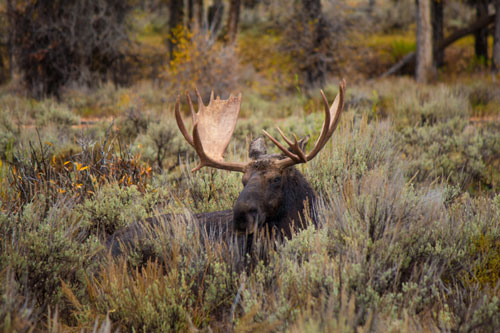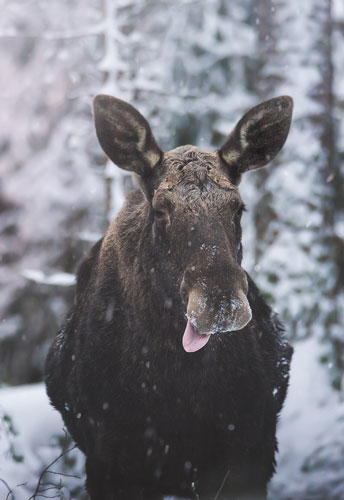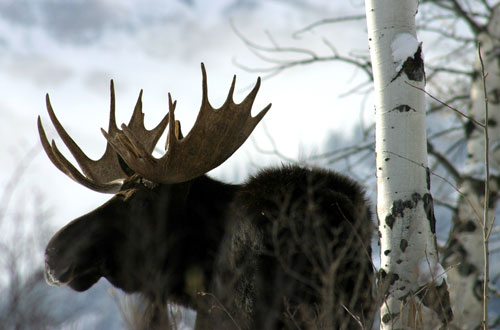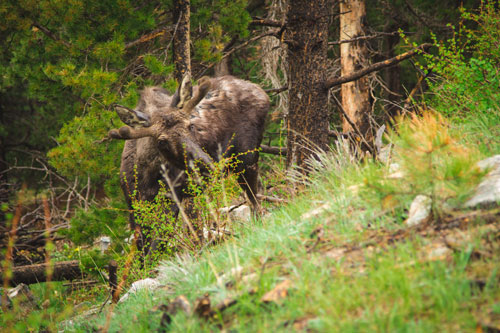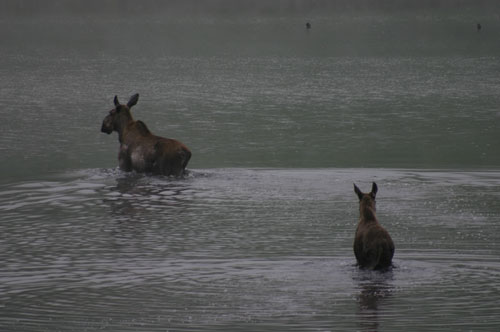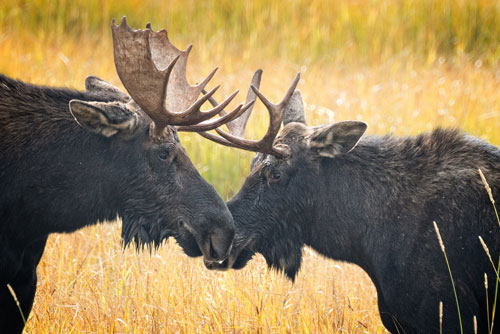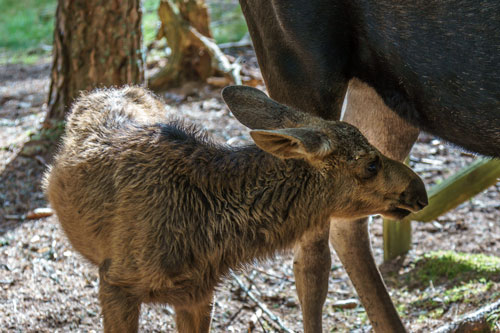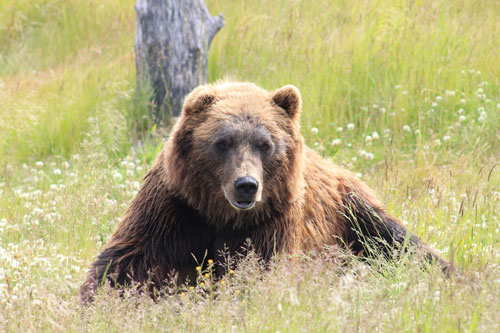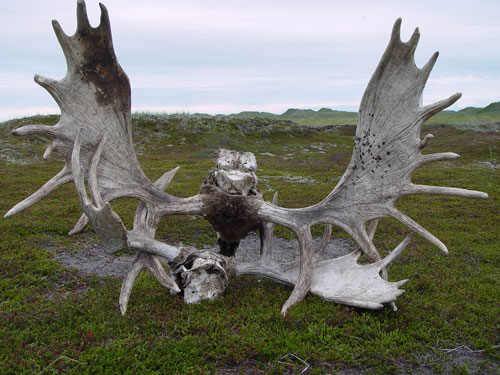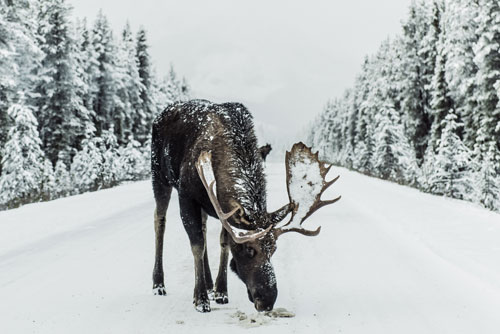Moose
(Genus, species: Alces alces)
I love moose and I have actually seen quite a few of thee amazing creatures in the wild. I always see them from a distance—thank goodness—because these mammals are HUGE! They actually have the biggest antlers of any living member of the Cervidae family (this is the family that deer belong to).
Here are some more cool facts about moose!
Distribution/Location: Moose are distributed all across the northern hemispheres in most of the Northern forest zones. In scientific terms, moose most commonly inhabit boreal (taiga) and subartic (tundra) regions.
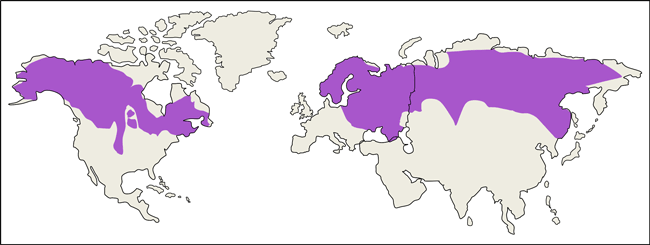
Moose are a generalized species so they are able to adapt to various locations and climates; for example, they may live in areas of dry or humid climate or in tundra or taiga regions.
Appearance: Male and female moose are about the same height, and measure in between 2 and 3 meters (excluding their antlers).
Males are heavier ranging between 350 kg to 600 kg compared to the females at 250 kg to 400 kg.
Moose have fairly short, dark brown hair though some are slightly reddish while others can be close to black. There are also rare cases of white furred moose.
Moose have a dewlap hanging from their necks. The dewlap is basically a loose flap of skin covered in a strip of longer fur.
In the winter, moose sometimes look more grey in colour but this is because their fur is covered in a thin coating of frost caused by their breath, not because their colouring actually changes.
Antlers: Male moose grow large, shovel shaped antlers with pointed ends each year. These antlers can weigh as much as 30 kg.
Moose use their antlers during mating displays and, to a lesser extent, for defense from predators. At the beginning of each winter, the moose shed their antlers.
Diet: Moose are herbivores. In the summer, moose feed on leaves, grasses and underwater plants. In the winter they mainly eat twigs and bark from shrubs and young trees.
Moose are very large, which means they require a lot of nutrition to keep their bodies fueled. Since they are herbivores, there is an extra challenge because plants are not as high in energy as meat. This is why moose tend to set up territories in areas with nutritional food sources. Underwater vegetation are especially high in nutritions, as well as young forests blooming in areas recently burnt down by forest fires.
Habitat: Moose can live in a number of different habitats including the northern tundra, woodlands and forests, swamps and muskeg, or near bodies of water in the boreal forest.
Moose have important adaptations that help them to live in these habitats; for example, they have long legs which work equally well moving through deep snow, marshy areas and water.
Moose live a fairly silent and solitary life. They can most easily be seen at dawn or dusk, when they are more active, moving quietly through shallow water or underbrush.
Mating: The mating behaviors of moose are dependent on the regions they are located in.
Tundra – These regions are very open so groups of moose will meet in an open habitat for mating season. Groups of moose are formed with a dominant male moose (bull) and many female moose (cows). Males in the group will compete with each other in rutting groups. They use their antlers to fight with each other and when the antlers contact a really loud sound is released, which impresses the female moose.
Taiga – Since there are not many open spaces to serve as mating grounds in boreal forests, moose tend to live more solitary lives. When male moose are searching for a mate they will dig holes in the ground and urinate in them to attract a female moose. In the taiga moose tend to be monogamous for an entire season (meaning the keep they same mate for the entire breeding season).
Breeding: Female moose begin breeding at about five years old and give birth to one calf every year or two, though twins are possible. Females are pregnant for 8 or 9 months through the winter, giving birth in the spring.
Like most mammals, moose are very protective of their young. In fact, moose defending their calves is the most common reason for moose attacks against humans. Calves leave their mothers after about one year, in time for the arrival of the next baby.
Predators: Predators include wolves, black bears and grizzly bears. They are also extensively hunted by humans, mostly for trophies.
It would make sense that the giant antlers of male moose are their most powerful weapons for defense; however, their strong feet are actually used more effectively.
Moose are such strong animals that most predators will either scavenge for moose that died of natural causes or target the young calves.
One of the most serious threats that affect moose is actually a fatal disease that is passed onto moose by white-tailed deer. The illness is often referred to as "moose disease" (rightly named).
Interesting Facts:
- If you find a shedded moose antler in the wild you aren't supposed to touch it. By touching it you take away the calcium on the antler, which many animals depend on for nutritients.
- The Inuit name for the moose is tuktuvak.
- In some places in Europe moose are also referred to as "elk", which causes some serious confusion because in North America elk is the name given to the wapiti species.
- When moose are greeting each other or trying to attract other moose they will often make a ‘whining’ sound.
- Moose can live up to 25 years!
- During the winter moose enjoy licking the salt that is sprayed on the roads.
References
Runtz, M. W. (1991). Retrieved January 21, 2018, from http://www.mooseworld.com/behavior.htm
Sattler, S. (n.d.). Mooseworld: Moose Species and Population. Retrieved January 20, 2018, from http://www.mooseworld.com/mooseman/index.htm
Wildlife Ecology College of Natural Resources. (n.d.). Moose - Reproduction. Retrieved January 21, 2018, from https://www.uwsp.edu/wildlife/Ungulates/Pages/Moose/Moose-Reproduction-and-Behavior.aspx
Worksheets and Other Activities:
- Moose Coloring Pages (from coloring.ws)
- "What I've learned about the Moose" Coloring Worksheet
- Help the Moose Travel through the Marsh Maze
- How many words can you make from MOOSE CALF Word Worksheet
